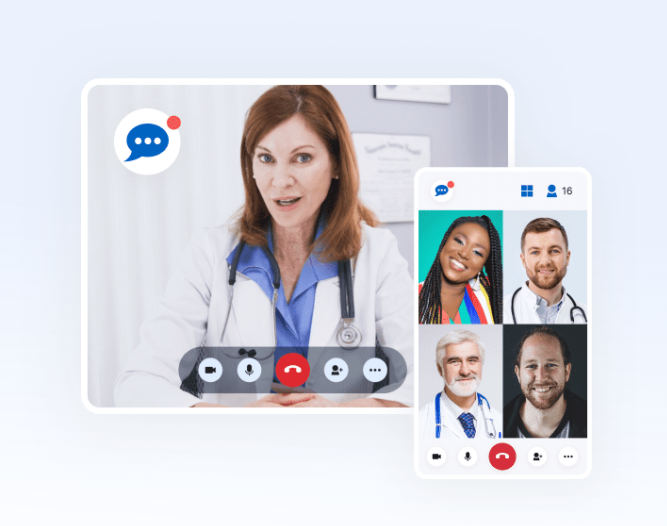The telemedicine software development industry has witnessed explosive growth in recent years, driven by technological advancements and increased demand for remote healthcare services. As healthcare providers and patients increasingly turn to virtual solutions, building telemedicine software that caters to global markets has become a crucial endeavor. However, developing software for a global audience involves more than just translation—it requires a deep understanding of diverse healthcare systems, regulations, and cultural preferences. This article explores the key considerations and localization strategies necessary for successfully building telemedicine software for international markets.
1. Understanding Global Market Dynamics
Before embarking on the development of telemedicine software for global markets, it’s essential to gain a thorough understanding of the various healthcare systems and regulations across different regions. Each country has its own set of rules, standards, and practices that govern telemedicine, making it crucial to adapt your software to meet these requirements.
a. Regulatory Compliance
Regulatory compliance is one of the most significant challenges when developing telemedicine software for global markets. Different countries have varying regulations regarding data privacy, patient consent, and medical practice standards. For example:
- United States: The Health Insurance Portability and Accountability Act (HIPAA) mandates strict guidelines for data security and patient confidentiality. Telemedicine platforms must ensure compliance with HIPAA standards to protect patient information.
- European Union: The General Data Protection Regulation (GDPR) governs data privacy and protection across the EU. Telemedicine software must adhere to GDPR requirements for handling personal data.
- China: The Cybersecurity Law and other regulations emphasize data localization and security, requiring software to meet specific standards for data protection.
b. Healthcare System Variations
Healthcare systems vary significantly between countries. Some countries have publicly funded healthcare systems, while others rely on private healthcare providers. Understanding these differences is crucial for tailoring your software to meet the needs of various healthcare models. For example:
- In countries with publicly funded healthcare systems, telemedicine software might need to integrate with national health records systems.
- In regions with a high prevalence of private healthcare providers, the software may need to support a wide range of payment options and integration with different healthcare management systems.
2. Designing for Multilingual and Multicultural Users
a. Localization vs. Translation
Localization goes beyond mere translation. It involves adapting the software to fit the cultural, linguistic, and functional needs of different regions. For example:
- Language: Ensure that the software supports multiple languages, not only for user interfaces but also for medical terminology and patient communication. Consider local dialects and regional language variations.
- Date and Time Formats: Different regions use different formats for dates and times. For instance, the United States uses the MM/DD/YYYY format, while most European countries use DD/MM/YYYY.
- Cultural Sensitivities: Be aware of cultural differences in medical practices and patient interactions. For example, certain medical practices or terminologies may be perceived differently in various cultures.
b. User Experience (UX) Design
Designing for diverse user bases requires careful consideration of UX design principles. A user-friendly interface should be intuitive and accessible for people from different cultural backgrounds. Key considerations include:
- Visual Design: Use culturally appropriate colors, icons, and imagery. Avoid designs that could be interpreted as offensive or inappropriate in certain cultures.
- Navigation: Ensure that the navigation flow is easy to understand and use for people with varying levels of tech-savviness and literacy.
3. Integrating with Local Healthcare Ecosystems
a. Electronic Health Records (EHR) Integration
Integrating with local EHR systems is crucial for telemedicine software to ensure seamless data exchange and continuity of care. Different regions use different EHR systems, and interoperability can be a challenge. Consider:
- Standards and Protocols: Use standardized protocols such as HL7 or FHIR for EHR integration to facilitate compatibility with various systems.
- Local Partnerships: Collaborate with local healthcare providers and technology partners to ensure smooth integration and compliance with regional standards.
b. Payment and Billing Systems
Payment systems vary widely between countries. Your telemedicine software should support local payment methods and billing practices. For example:
- Payment Gateways: Integrate with local payment gateways that are widely used in the target market.
- Insurance and Billing: Adapt to local insurance and billing practices, including handling various currencies and payment methods.
4. Ensuring Data Security and Privacy
a. Data Encryption and Security
Data security is paramount in telemedicine, given the sensitive nature of health information. Implement robust encryption and security measures to protect patient data. Consider:
- End-to-End Encryption: Ensure that data is encrypted during transmission and storage to prevent unauthorized access.
- Access Controls: Implement strong access controls and authentication mechanisms to restrict access to sensitive data.
b. Compliance with Local Data Protection Laws
Adhering to local data protection laws is essential for gaining the trust of users and avoiding legal issues. Regularly review and update your software to comply with evolving regulations in different regions.
5. Testing and Quality Assurance
a. Regional Testing
Conduct thorough testing of your telemedicine software in each target region to identify and address any localization issues. This includes:
- Functional Testing: Ensure that all features work correctly in different languages and cultural contexts.
- Usability Testing: Test the software with users from diverse backgrounds to gather feedback and make necessary adjustments.
b. Continuous Improvement
Continuously monitor and improve the software based on user feedback and evolving market needs. Stay updated with technological advancements and regulatory changes to ensure that your software remains relevant and effective.
6. Building Local Partnerships
a. Collaborating with Local Experts
Partnering with local experts can provide valuable insights into regional healthcare practices, regulations, and user preferences. Consider:
- Healthcare Professionals: Collaborate with local healthcare providers to understand the specific needs and challenges of the target market.
- Technology Partners: Work with local technology partners to ensure compatibility and integration with regional systems and standards.
b. Engaging with Local Communities
Engage with local communities to build trust and gain a deeper understanding of their needs. This can include:
- Community Outreach: Conduct outreach programs and focus groups to gather feedback and build relationships with potential users.
- Local Marketing: Tailor your marketing strategies to resonate with local audiences and address their specific needs and concerns.
7. Navigating Legal and Ethical Considerations
a. Ethical Standards
Adhere to ethical standards in telemedicine, including ensuring informed consent, maintaining patient confidentiality, and providing equitable access to care. Consider:
- Informed Consent: Ensure that patients understand and consent to the use of telemedicine services, including data collection and storage practices.
- Equity: Strive to provide equitable access to telemedicine services, regardless of socioeconomic status or geographical location.
b. Legal Framework
Familiarize yourself with the legal framework governing telemedicine in each target market. This includes:
- Licensing Requirements: Ensure that your software complies with local licensing requirements for healthcare providers.
- Liability and Malpractice: Understand the legal implications of telemedicine services and implement measures to mitigate liability and malpractice risks.
Conclusion
Building telemedicine software for global markets is a complex but rewarding endeavor. By understanding the diverse healthcare systems, regulations, and cultural preferences of different regions, and by implementing effective localization strategies, you can create a telemedicine platform that meets the needs of a global audience. Key considerations include regulatory compliance, multilingual support, integration with local healthcare systems, data security, and ongoing testing and improvement. By addressing these factors and collaborating with local experts, you can develop a telemedicine solution that enhances access to healthcare and improves patient outcomes worldwide.

